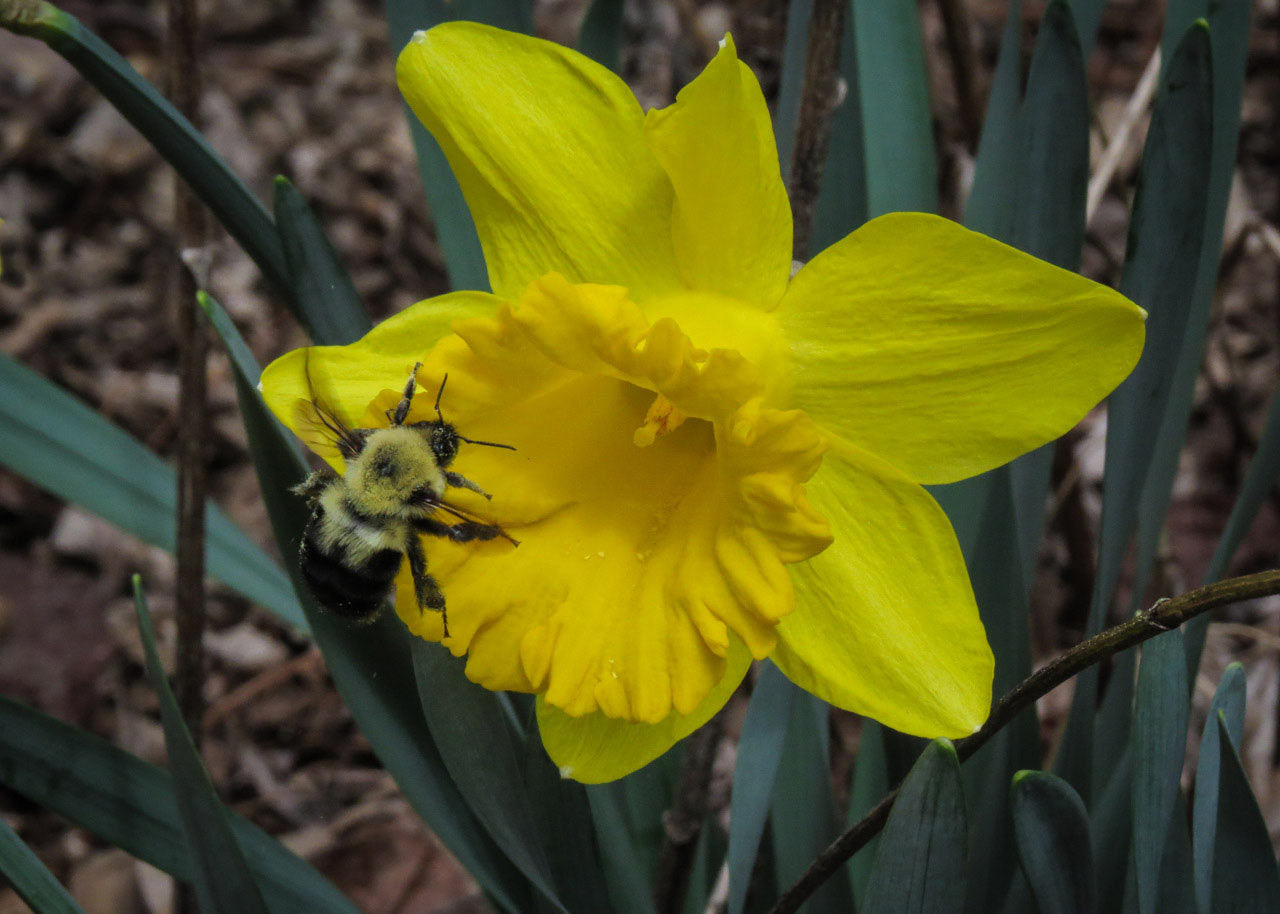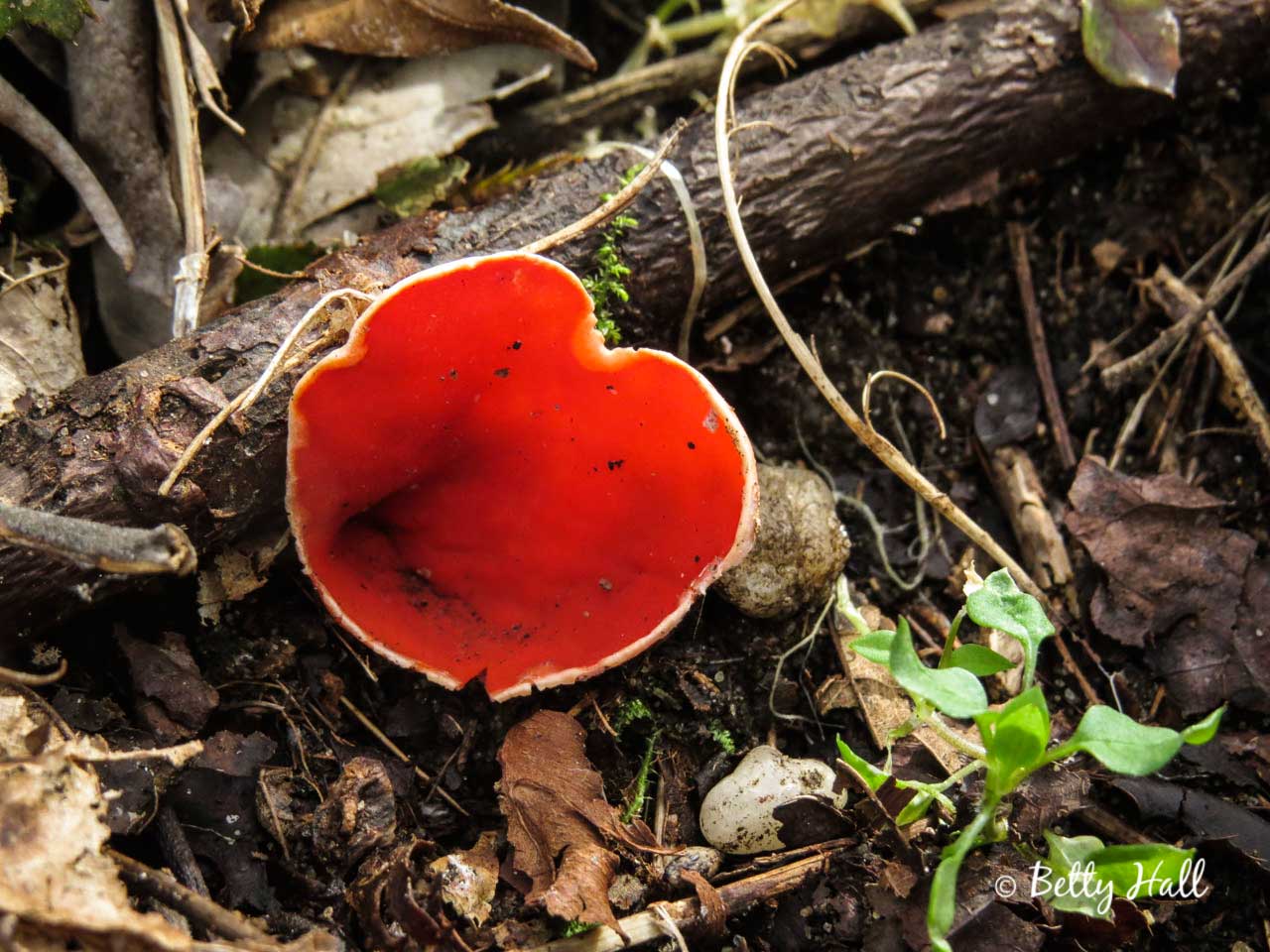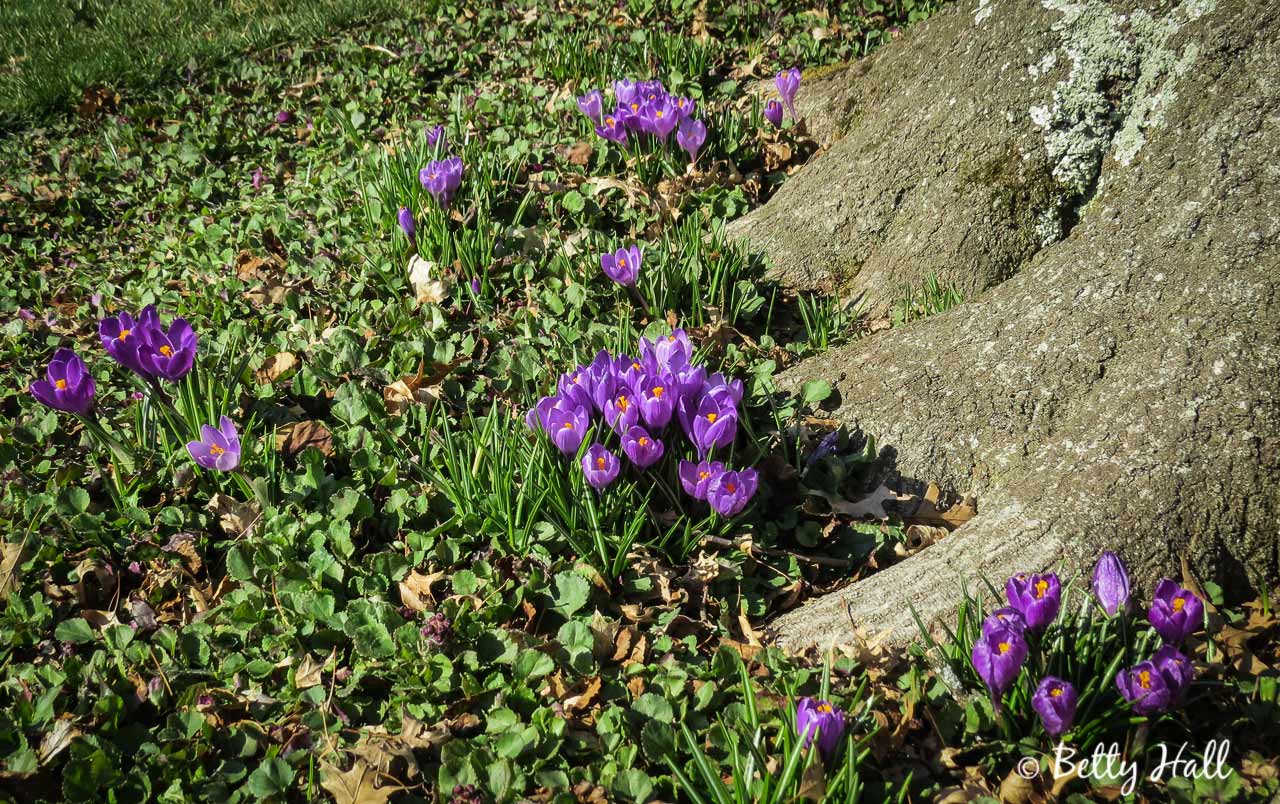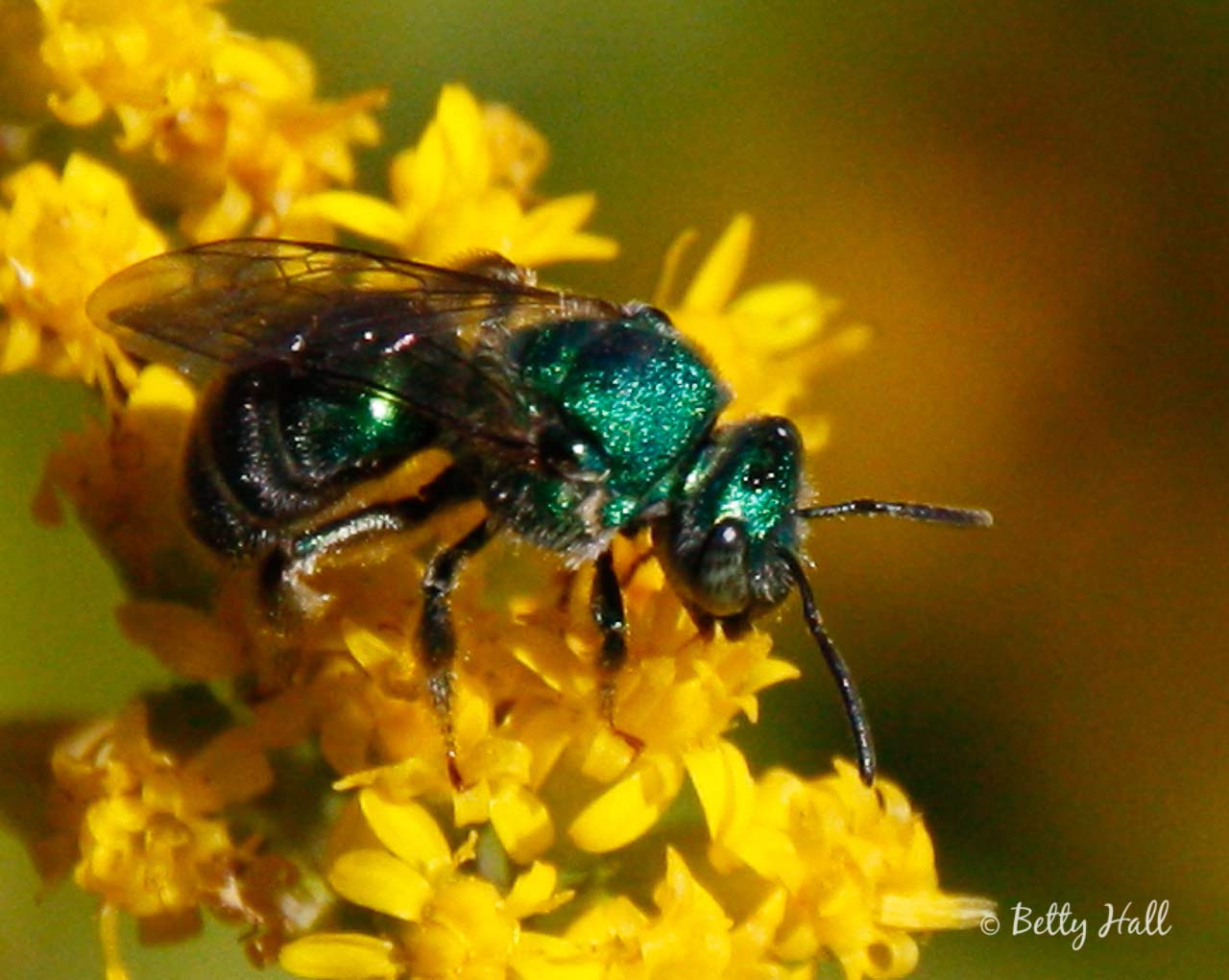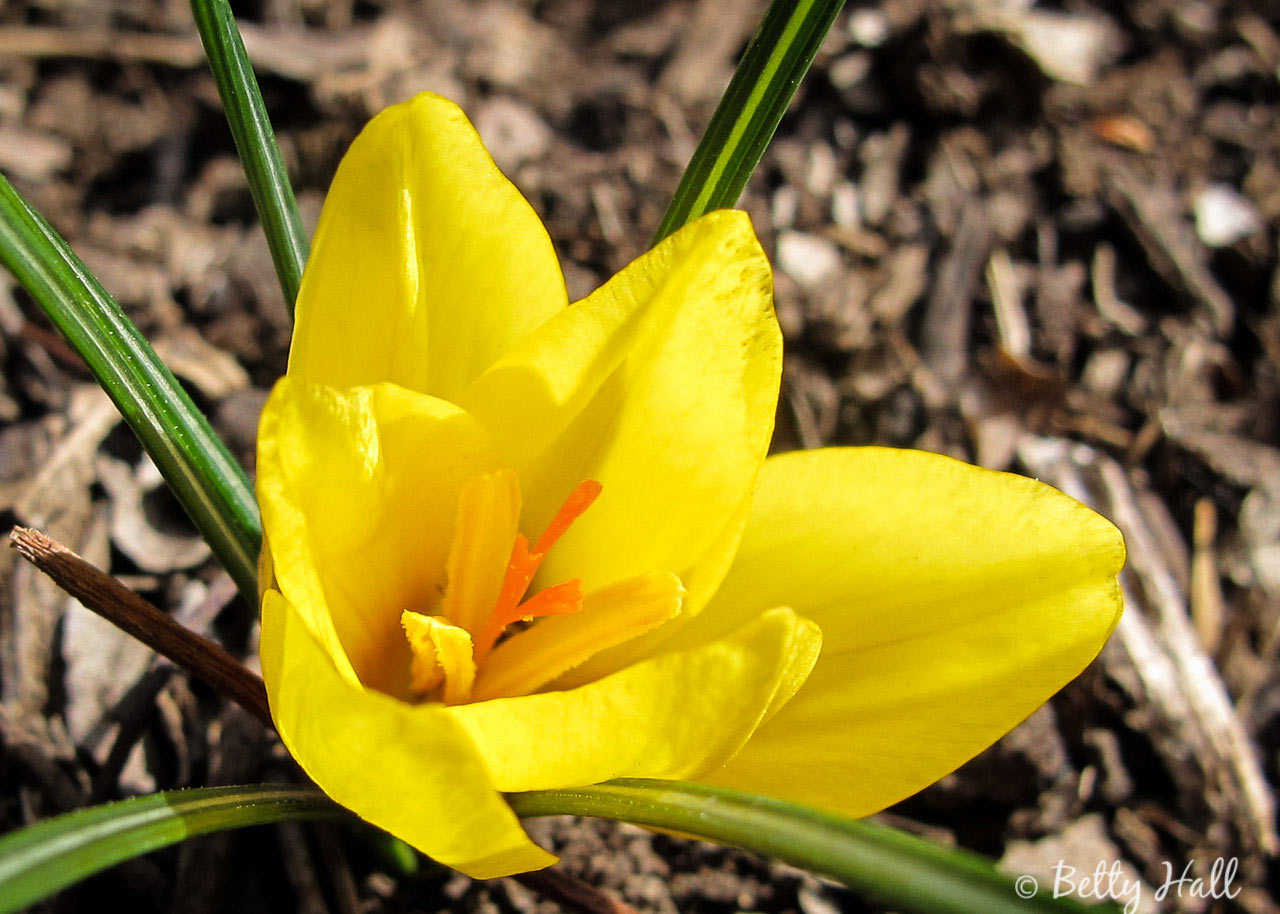I like bumble bees. Their fuzzy bodies remind me of miniature teddy bear, and they move slowly enough that I can easily watch them. I was thrilled recently to see this large bumble bee visiting one of our daffodil blossoms. I suspected it was a queen, since I’ve learned that only fertilized queen bumble bees hibernate and survive the winter. They are the first to appear in spring as they prepare to establish a new colony.
Author: Betty Hall
Signs of spring in the woods
I’m delighted to say that spring has arrived in Kentucky woods. On recent hikes at Natural Bridge State Park, I spotted several small (½ inch) Scarlet Cup mushrooms (Sarcoscypha dudleyi). These spring mushrooms always add a bright note to any hike.
More crocuses and pollinators
I planted this bed of crocuses thirty years ago, and they’ve announced spring’s arrival every year since. They are surrounded by golden ragwort, which provides a ground cover around the base of our large pin oak tree.
It was a sweat bee!
The response to last week’s blog post prompted me to send the photographs to BugGuide for identification. I now know the pollinator was a sweat bee, specifically Halictidae lasioglossum. I’ve learned there are many species of sweat bees. Many are dark black or brown, but some are quite colorful. I saw this one (Halictidae agapostemon) in our backyard a few years ago.
I’ve also seen this one (Augochloropsis metallica). It reminds me of a jewel – maybe a flying emerald?
First crocus and pollinator
I was surprised and quite pleased recently to find the first blooms of the year. There were a few small crocus flowers in our backyard, and this yellow one especially caught my eye.

